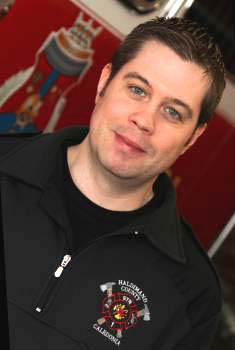|
VOICE ACTING - VIDEO Three Time-Sharing Tips For Large Voice Over eLearning & Narration Projects April 6, 2016  (VOXtra) - Got a large eLearning project and worried about time? A fireman comes to your rescue. (VOXtra) - Got a large eLearning project and worried about time? A fireman comes to your rescue.And in this case, your rescuer is also a seasoned voice over pro and coach - Marc Scott. Recently, Marc was voicing a 3,200-word eLearning project for a firefighting program and he thought of creating the brief video below to share three time-saving tips for long-form voice over narration. Thanks, Marc! ------------------ ABOUT MARC Marc Scott has been involved in broadcasting and voice over since 1995, including work in radio and television, and hosting the number 1-rated Afternoon Drive show in Hamilton, Ontario, Canada. "When Iím not recording my latest voice over job you can likely find me at the fire hall: Iíve been a volunteer firefighter since 2000, or playing with power tools." Email: marc@marcscottvoiceover.com Web: www.marcscottvoiceover.com |
With Sean Daeley and Paul Stefano - check it out!
Email alerts to new VoiceOverXtra articles
For essential voice-over business strategies
Get your bi-weekly dose here ... all things VO!
As of the NEW website launch, 03/22/2012




.png)





I go back a few years and never thought of a kid's clicker to make a "sharp" sound. I used the clicking of the stopwatch close to the mic to start recording. Three clicks...on, off, on...and commence recording. Minimal time lost and better vocal marker than "3-2-1" for editing. However with longer scripts necessitating more editing (instead of starting over as on :30/:60 spots) finger-snaps and plain old hand claps also work! Better yet...don't make mistakes! =)
Jay.
I do something similar, but instead of the clicker (by the way, I didn't know they existed), I do a very high pitch sound.
I just do one every time a do a mistake, and just cut till the next wave sound without a high pitch after it.
Different VOs, different techniques!